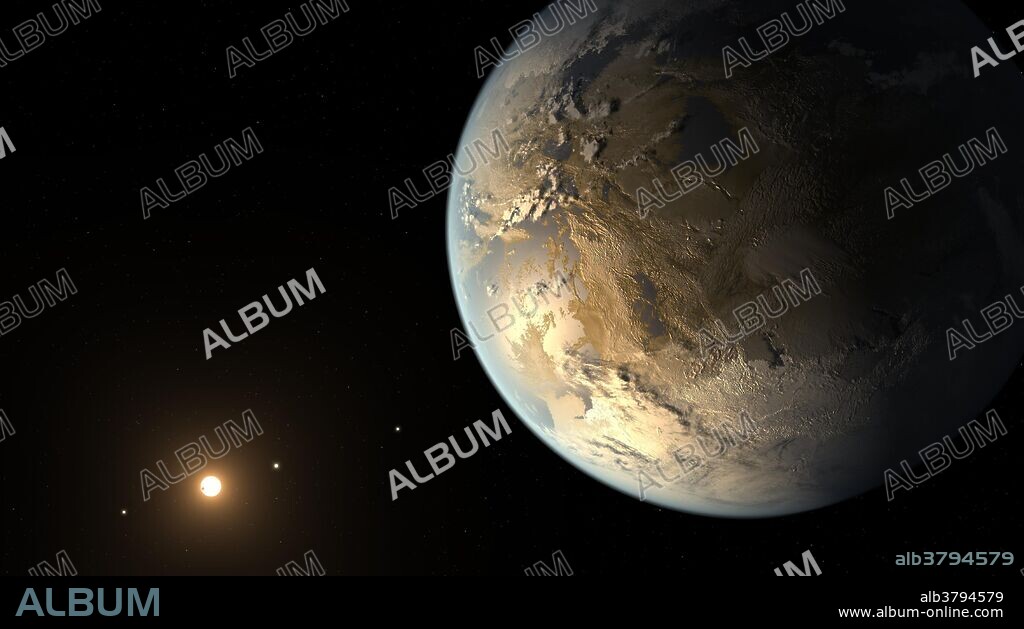alb3794579
Exoplanet Kepler-186f

|
Ajouter à une autre Lightbox |
|
Ajouter à une autre Lightbox |



Avez-vous déjà un compte? S'identifier
Vous n'avez pas de compte ? S'inscrire
Acheter cette image.
Sélectionnez l'usage:

Titre:
Exoplanet Kepler-186f
Légende:
Voir la traduction automatique
Artist's concept depicts Kepler-186f, the first validated Earth-size planet to orbit a distant star in the habitable zone - a range of distance from a star where liquid water might pool on the planet's surface. The discovery of Kepler-186f confirms that Earth-size planets exist in the habitable zones of other stars and signals a significant step closer to finding a world similar to Earth. The size of Kepler-186f is known to be less than ten percent larger than Earth, but its mass, composition and density are not known. Previous research suggests that a planet the size of Kepler-186f is likely to be rocky. Prior to this discovery, the "record holder" for the most "Earth-like" planet went to Kepler-62f, which is 40 percent larger than the size of Earth and orbits in its star's habitable zone. Kepler-186f orbits its star once every 130 days and receives one-third the energy that Earth does from the sun, placing it near the outer edge of the habitable zone.
Crédit:
Album / Science Source / NASA/Ames/SETI Institute/JPL-Caltech
Autorisations:
Modèle: Non - Propriété: Non
Questions sur les droits?
Questions sur les droits?
Taille de l'image:
4534 x 2550 px | 33.1 MB
Taille d'impression:
38.4 x 21.6 cm | 15.1 x 8.5 in (300 dpi)
Mots clés:
 Pinterest
Pinterest Twitter
Twitter Facebook
Facebook Copier le lien
Copier le lien Email
Email
